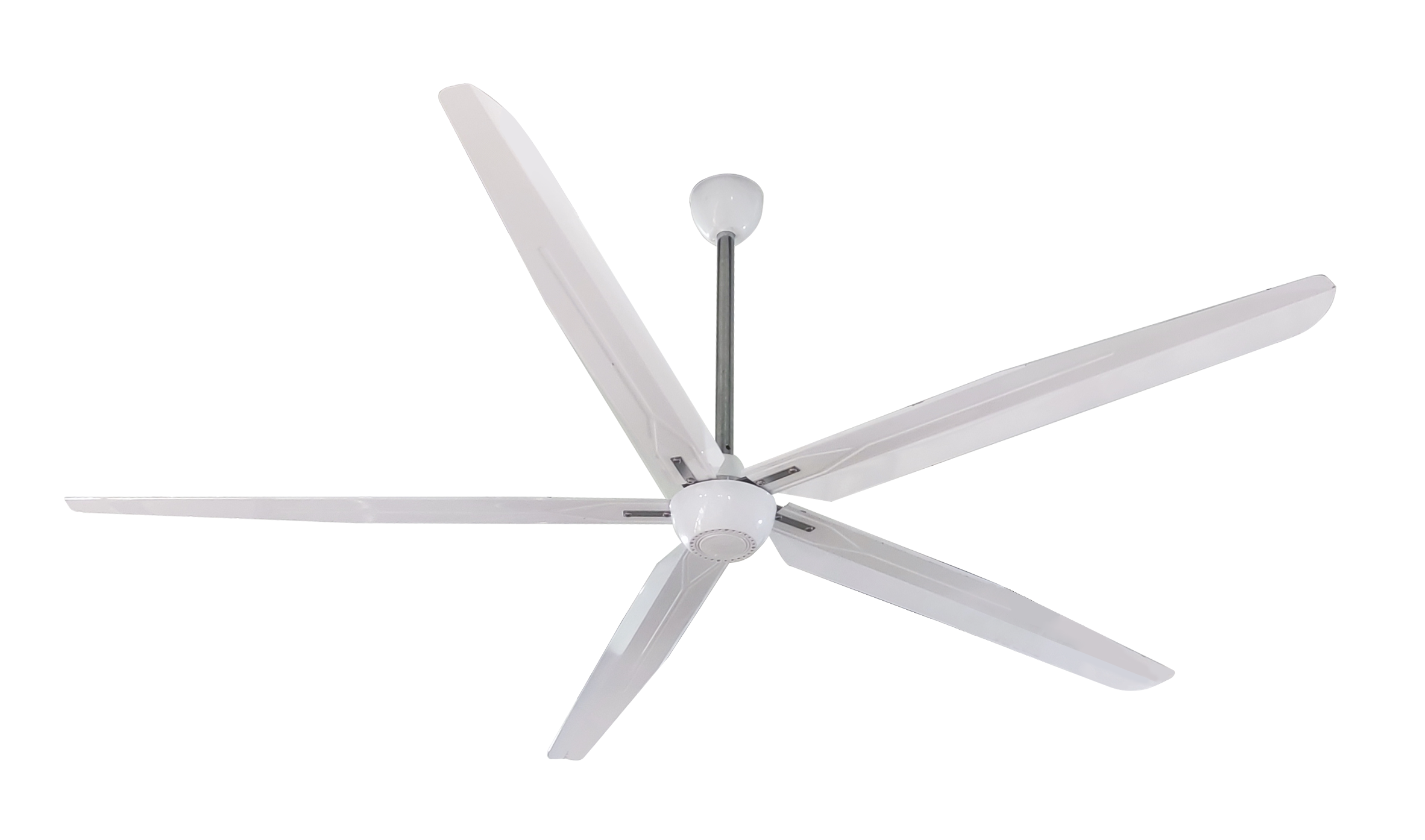Გათვალისწინებით მდგრადობისა და ენერგოეფექტურობის მიზნებზე მიმდინარე აქცენტების, ენერგიის დაზოგვის სამრეწველო ფანების მომავალი აუცილებლად მნიშვნელოვანი იქნება. ამ ნაწილის შესწავლა ახალ განვითარებას და ცვლილებებს, რომლებიც მიმდინარეობს ამ სექტორში და როგორ შეუძლიათ დაეხმარონ ინდუსტრიას თავიანთი ეკოლოგიური კვალს, ასევე შეამცირონ მათი ექსპლუატაციის ხარჯები, ხოლო ამავე დროს გააძლიერონ საერთო პროდუქტიულობა.
Ენერგიას შენობის ინდუსტრიალური ვენტილატორები მართლაც გაფართოებული გამოყენების წყაროს ჰქონდეს, მათ შორის შესამზარეულო და აგრარულ სекторებში. რადგან განსხვავებული ინდუსტრიები ახალ გარემო-დაცვის წესებს აღმოჩნდებიან, ეფექტიური ჰაერის მოძრავი ამოხსნების საჭიროება უკვე იზრდება.
Ალბათ ერთ-ერთი ყველაზე დიდი ტრანსფორმაცია, რომელიც იზრდება, არის ინტელექტუალური ტექნოლოგიების გამოყენება ინდუსტრიულ ფანებში. აღსანიშნავია, რომ ჭკვიანი გულშემატკივრები IoT კავშირით აძლიერებენ ვირტუალურ ურთიერთქმედებას, ანუ ეს უკანასკნელი მონიტორინგს და მართვას რეალურ დროში. ეს საშუალებას აძლევს ბიზნესს დააყენოს თავისი ფანტიფიკატორი მოქნილი მოთხოვნების საფუძველზე, რაც ენერგიის ხარჯების შემცირებას იწვევს. მაგალითად, უნიკალური სენსორები შეიძლება გაზომოს ჰაერის ნაკადის მოთხოვნები, რაც ხელს უწყობს გულშემატკივრის ბრუნვის სიჩქარის შეცვლას, რათა არ იყოს ზედმეტი გამოყენება, როდესაც საჭიროა მცირე რაოდენობა.
Ამასთანავე, თანამედროვე ძრავების დიზაინის დანერგვა, როგორიცაა ბურღულა დისკუსორული ძრავები, ცვლის ინდუსტრიული გულშემატკივრების ეფექტურობას. ასეთი ძრავები იყენებენ ნაკლებ ენერგიას და აწარმოებენ ნაკლებ სითბოს სხვა ტრადიციულ ძრავებთან შედარებით, აქედან გამომდინარე, ნაკლები ხარჯები. სულ უფრო მეტი კომპანია ირჩევს ასეთ ტექნოლოგიებს, რათა გააუმჯობესონ მათი მოწყობილობების საიმედოობა და ექსპლუატაციის ხანგრძლივობა და ამით მიაღწიონ მდგრადობის მიზნებს.
Სხვა სახის ფანების კონსტრუქციაა, რომლებიც აეროდინამიკური დიზაინის გამოყენებით ხორციელდება. ბლედის ფორმისა და კონფიგურაციის ოპტიმიზაციის მრავალი ტექნიკა გამოიყენება წინააღმდეგობის შემცირებისა და ჰაერის ნაკადის ეფექტურობის შესამცირებლად. ეს არა მხოლოდ აუმჯობესებს გულშემატკივრების ეფექტურობას, არამედ ამცირებს მათ მიერ შექმნილი ხმაურის დონეს, რაც მათ სხვადასხვა სამუშაო გარემოში გამოიყენებს. ისევე როგორც ინდუსტრიები უფრო მეტად ზრუნავენ თავიანთი თანამშრომლების კომფორტზე და რეგულაციებზე, უფრო ეფექტური და ჩუმად მყოფი გულშემატკივრები გახდა აუცილებლობა.
Ასევე, მზარდი ტენდენციაა ინდუსტრიული გულშემატკივრების წარმოებაში, რომელიც ტექნოლოგიებს მოიცავს. ეკოლოგიურად სუფთა მასალების გამოყენება. გარემოს დაცვის მიზნით, მწარმოებლები ეძებენ ალტერნატივებს, როგორიცაა გადამუშავებული ლითონების გამოყენება და მწვანე კომპოზიტური მასალები. ეს ცვლილება არა მხოლოდ კორპორაციების მდგრადობის მიზნებს შეესაბამება, არამედ ეკოლოგიურად სუფთა ინსტიტუტებისა და კლიენტების სასურველია.
Მომავალი მზიანი ჩანს ინდუსტრიული ენერგიის დაზოგვის გულშემატკივრების ბაზრისთვის, რომელიც, სავარაუდოდ, გაიზრდება შთამბეჭდავი ტემპით. ენერგოეფექტური დიზაინების მიმართ აქცენტი შეიცვალა და ახალი მასალები და ტექნიკა შევიდა სფეროში, რომელიც ხელს შეუწყობს შემოქმედებით დიზაინს ამ სფეროში. კომპანიები, რომლებიც იცვლებიან, არა მხოლოდ შეამცირებენ ენერგიის ხარჯებს, არამედ გააუმჯობესებენ საზოგადოებაში თავიანთ იმიჯს, როგორც კეთილსინდისიერი ბიზნეს ორგანიზაციები.
Შეჯამებით, ენერგოეფექტური ინდუსტრიული ფანტელონების პერსპექტივები დამაიმედებელია და ტენდენციები მიუთითებს იმაზე, რომ მომავლის ფანტები უფრო ინტელექტუალური, ენერგოეფექტური და ეკოლოგიურად სუფთა გახდება. ამ ტექნოლოგიების განვითარება საშუალებას მისცემს კომპანიებს აყვავდნენ ამჟამინდელ სამრეწველო სცენარში, რაც მიჰყავს ეკოლოგიურად სუფთა პრაქტიკას.
 EN
EN
 AR
AR
 BG
BG
 HR
HR
 CS
CS
 NL
NL
 FI
FI
 FR
FR
 DE
DE
 EL
EL
 IT
IT
 KO
KO
 NO
NO
 PL
PL
 PT
PT
 RO
RO
 RU
RU
 ES
ES
 SV
SV
 ID
ID
 LT
LT
 SR
SR
 UK
UK
 VI
VI
 HU
HU
 TH
TH
 TR
TR
 FA
FA
 MS
MS
 HY
HY
 AZ
AZ
 KA
KA
 BN
BN
 LO
LO
 LA
LA
 NE
NE
 MY
MY
 KK
KK
 KY
KY


 ONLINE
ONLINE